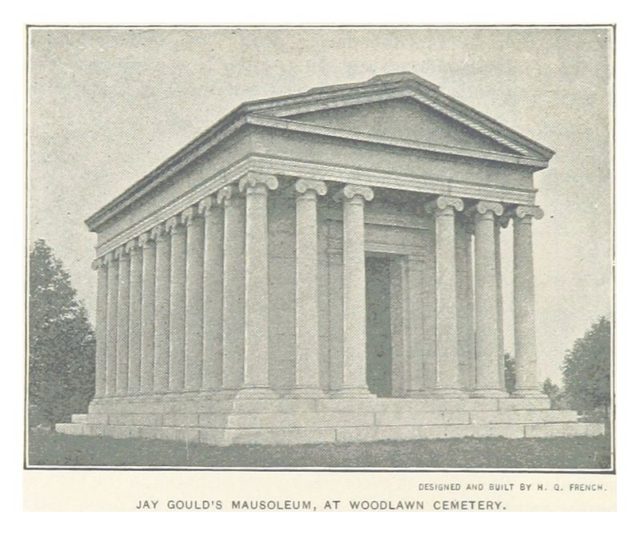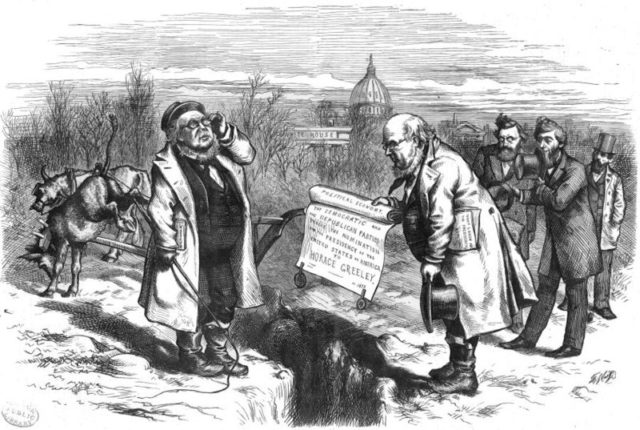In the late 19th century, there was a businessman who was so unscrupulous and had business practices that were so ruthless that they would be illegal today. His name was Jay Gould, and over his career, he made and lost several fortunes. By the time of his death in 1892, he was believed to be worth over $100 million.
Gould was born in Roxbury in 1836 to a farming family. As a teen, he acquired a job making maps of counties; he also spent time working in a blacksmith shop and became involved in a tanning business. He liked to be busy. There was a rumor that he led his business partner, Charles Leupp, into making reckless stock transactions which caused his financial ruin and death.


In 1840, Gould was now in New York City and learning about Wall Street. It was an unregulated market and Gould showed a talent for manipulating the stocks. He was especially good at cornering stocks and driving the prices up. In 1859, he began speculating on small railways and eventually ending up managing the Rensselaer and Saratoga Railway.
He then moved on to purchase the Rutland and Washington Railways and became a director of the Erie Railroad. In 1868, Vanderbilt tried to gain control of the Erie Railroad and, to prevent this, Gould started to issue fraudulent stock and pay bribes to New York state legislators to legalize them. It was dubbed the Erie War and became a public spectacle. A deal was eventually brokered between Vanderbilt and Gould.


In the late years of the 1860s, Gould focused his attention on the quirks in the gold market. Since his cornering of stocks worked so well, he created a plan to corner gold. If his plan worked, he would end up controlling the gold supply and influencing the American economy. To do this, he started by bribing officials in the government so that gold reserves wouldn’t be sold while he was driving up the prices.
The culmination of his plans created “Black Friday”. On September 24, 1869, the gold price began to rise, and this caused a huge panic on Wall Street. Due to this panic, the federal government started selling gold by midday, and the price dropped, ruining Gould’s plan. Many investors ended in financial ruin and what profit Gould did make he now lost as lawsuits were filed against him.



Soon he was buying low the stocks of the Union Pacific Railroad and by 1874 had control of the company. At the same time, he started to buy up shares in the Atlantic and Pacific Telegraph Company and the Missouri Pacific Railroad. Not happy with what he had, he further invested in Western Union; by 1882 it is estimated that he owned 15 percent of the railway tracks in America and had shares in many different railway companies across the country. He spent much of his time reorganizing the railways and making them more efficient. It was his unsavory and shady dealings with the railways that gave him the name and reputation of a Robber Baron.
He didn’t stay single in his busy life; he married Helen Day Miller, and they were together until she died in 1889. Gould died soon after from tuberculosis in 1892 and left behind six children.
